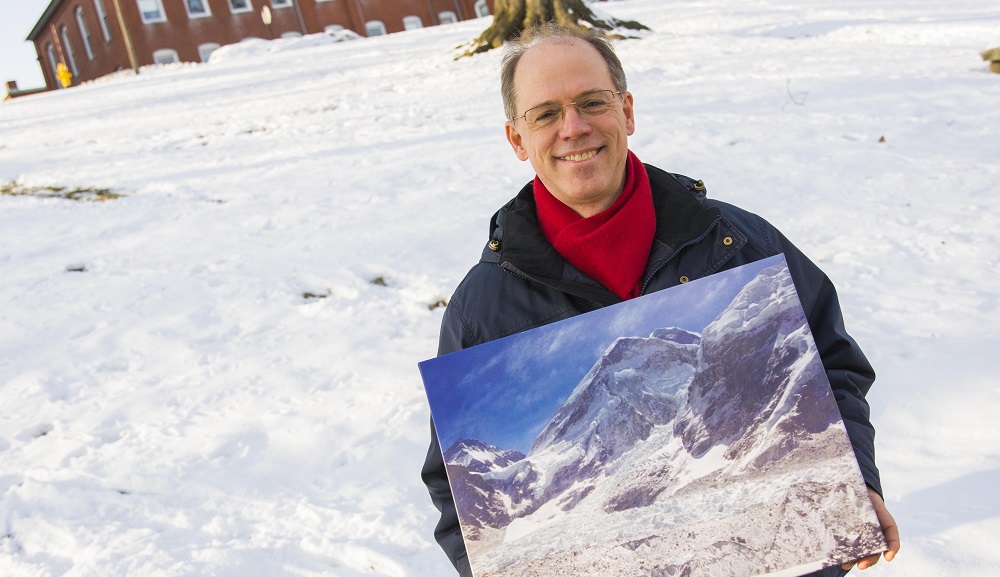Peter Hansen, associate professor of humanities and arts at Worcester Polytechnic Institute (WPI), has written an authoritative book on the history mountaineering. The Summits of Modern Man: Mountaineering after the Enlightenment, was released this month by Harvard University Press in tandem with the 60th anniversary of the first ascent of Mount Everest.
The culmination of more than 20 years of research spanning five continents, the book chronicles the first ascents of the major Alpine peaks and Mount Everest. It explores the mythology and symbolism of the conquest of once forbidden heights and shows how the image of modern man triumphant upon a mountain peak still shapes our feelings about nature even as climate change and global warming make us ambivalent about the conquest of the natural world.
On Tuesday, May 28, one day before the 60th anniversary of the first ascent of Mount Everest by Sir Edmund Hillary and Sherpa guide Tenzing Norgay, Hansen, one of the nation’s foremost academic experts on mountaineering, will deliver a lecture about the book at the University of London.
As Hansen notes in The Summits of Modern Man, mountain peaks were viewed as awe-inspiring and largely inaccessible places prior to 17th and 18th centuries. But during the Age of Enlightenment, human climbers began scaling these heights. In the process, they came to see nature as something to be dominated and mountain climbing, itself, as a modern form of individuality. The mythology of mountaineering persisted, so even in 1953 the conquest of Mount Everest was viewed as a magical event.
In a chapter dedicated to that ascent, Hansen delves into the human dynamics that played out after the climbers came back down. Hillary, a native New Zealander and a British subject, was knighted by Queen Elizabeth; Tenzing, who lived in India, a former British colony, was not. "The Indian constitution abolished titles and prohibited citizens from accepting any from foreign states," Hansen writes in the book. In addition, he notes, Tenzing’s Indian citizenship "…required the rejection of British honors as symbols of British domination."
Hansen also discusses the controversy that emerged over who reached the summit first. While Hillary eventually was recognized as the first to set foot atop Everest, he and Tenzing released statements after the climb saying they "reached the summit almost together." That’s because, as Hansen notes, they were connected by a rope and were dependent on one another.
Hansen said the notion of interdependence extends beyond mountaineering and can be seen as a metaphor for virtually everything today. "The book really has larger messages about what it means to be connected in society today," he said. "While we often view ourselves as independent beings who make decisions with little regard for others, the reality is that humans need to depend on each other and our actions or inaction can have significant consequences for the future."


